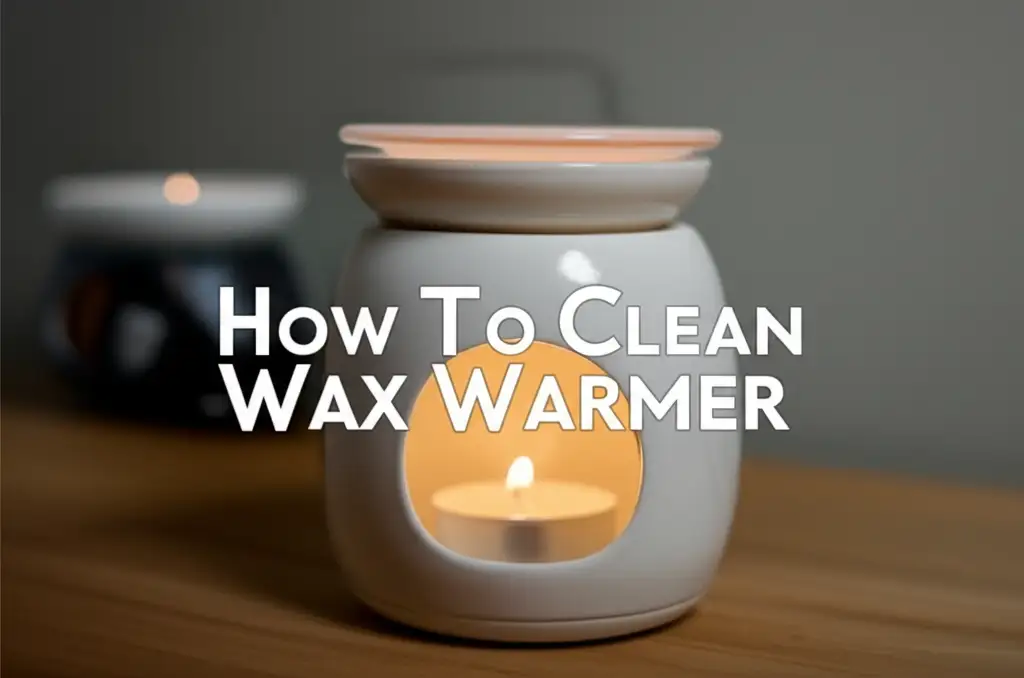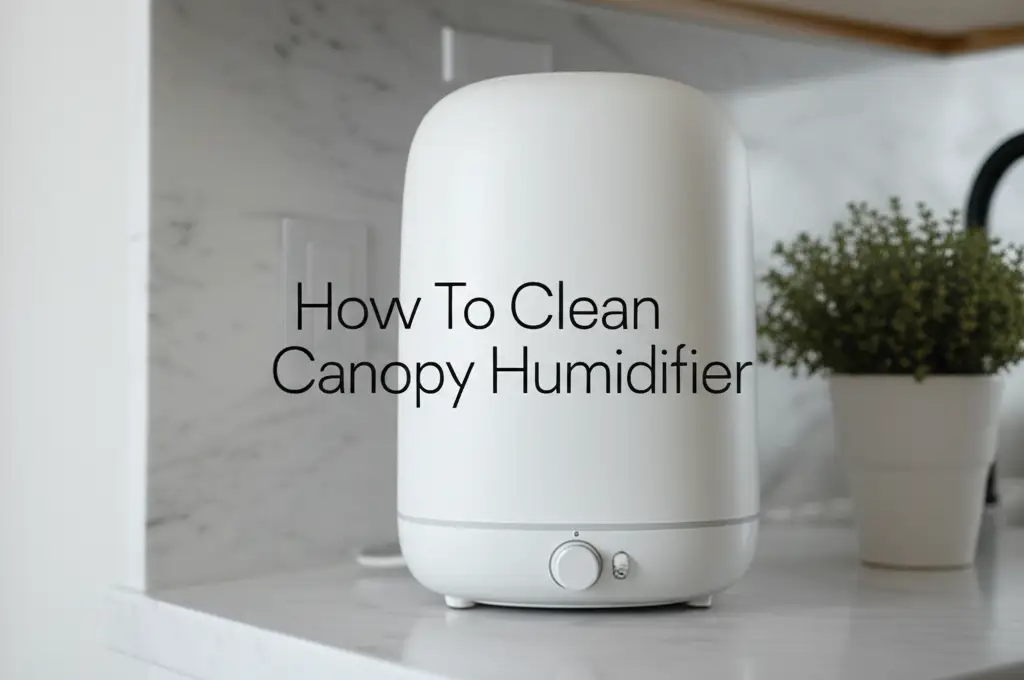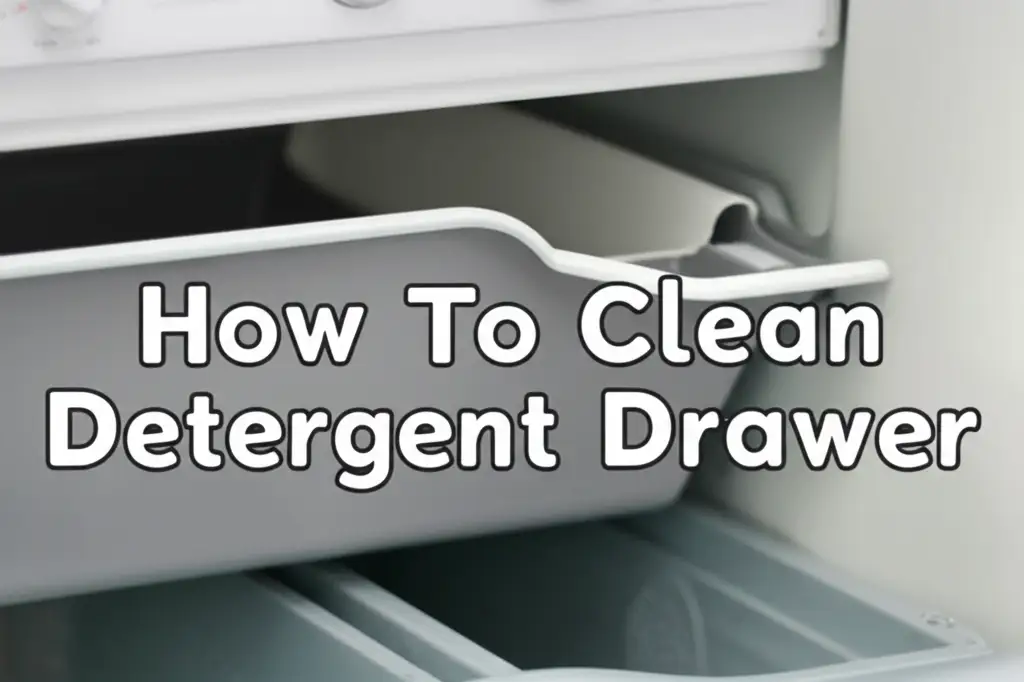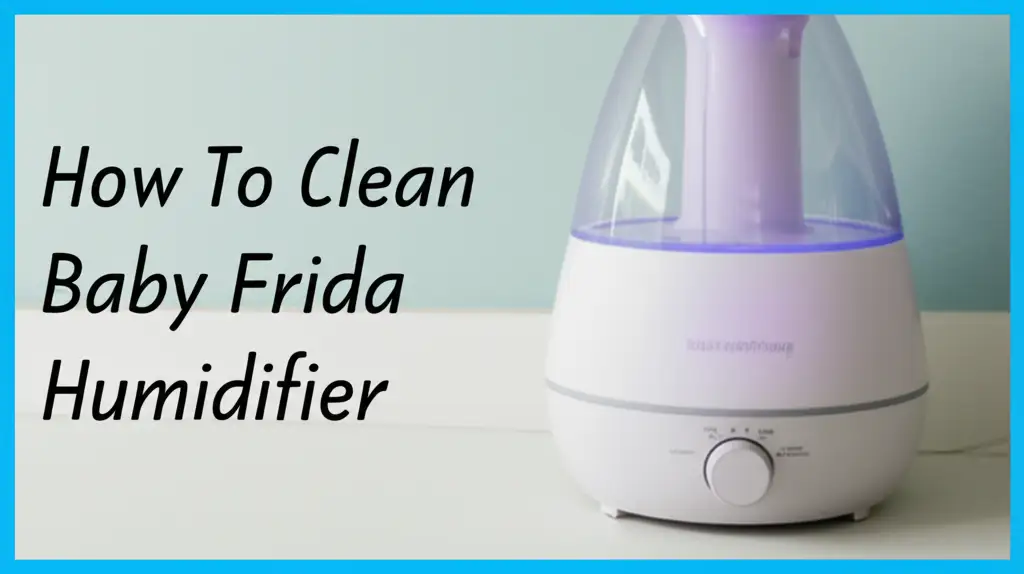· Home Cleaning · 18 min read
How To Clean Air Wick Plug In

Keep Your Home Fresh: How to Clean Air Wick Plug-Ins
You enjoy the pleasant scents that fill your home, thanks to your Air Wick plug-in units. Over time, these small devices collect dust, grime, and even a sticky residue from the fragrance oil. This build-up can affect how well your plug-in works. It might even spread unwanted particles into your air. Learning how to clean Air Wick plug-in units properly helps them work better. Regular cleaning also keeps your home truly fresh and free of hidden dirt. We will explore simple, effective methods to maintain your Air Wick plug-ins. This guide helps you restore their efficiency and keep your living spaces smelling delightful.
Takeaway
- Regularly clean Air Wick plug-ins to maintain scent dispersion and prevent residue buildup.
- Always unplug the device and remove the fragrance bottle before starting.
- Use a dry cloth for initial dust removal, then a slightly damp cloth for sticky residue.
- Address stubborn oil build-up with isopropyl alcohol or a gentle degreaser.
- Consider weekly or bi-weekly cleaning for optimal performance and hygiene.
How do you clean an Air Wick plug-in?
You clean an Air Wick plug-in by first unplugging it and removing the fragrance bottle. Use a dry microfiber cloth to wipe away dust and loose debris from the exterior. For sticky residue, dampen a cloth with a small amount of isopropyl alcohol or mild soapy water. Carefully wipe down all surfaces, paying attention to vents and crevices. Allow the unit to dry completely before reinserting the bottle and plugging it back in.
Understanding Why Cleaning Your Air Wick Plug-In Matters
Keeping your Air Wick plug-in clean is more than just about aesthetics. These devices work by heating fragrance oil, which then disperses into the air. Over time, dust particles floating in the air settle on the unit’s surface. The heating element can also attract and bake on a sticky film from the fragrance oil itself. This film can accumulate around the vents and internal components.
This build-up creates several problems. First, a dirty plug-in might not disperse scent as effectively. The collected grime can block the airflow, reducing the reach of the fragrance. Second, dust and old oil residue can become airborne, affecting your indoor air quality. If you notice a less pleasant smell or reduced fragrance output, a good cleaning is likely overdue. Regular maintenance ensures your Air Wick plug-in operates at its best, providing consistent freshness. It also helps extend the life of the device itself.
Think about how other air-related devices require cleaning. You clean your air conditioner filter for better performance, right? Similarly, keeping your Air Wick plug-in free of blockages ensures it performs its intended function. A clean device means a more effective, healthier scent experience for your home. This simple habit keeps your living space smelling great.
Essential Tools for Cleaning Your Air Wick Plug-In
Gathering the right tools before you start cleaning makes the process simple and efficient. You do not need many specialized items to properly clean your Air Wick plug-in. Most of what you need is likely already in your cleaning kit. Having these items ready prevents interruptions during the cleaning process. This ensures you can complete the task quickly and effectively.
Here is a list of the basic tools you will need:
- Microfiber Cloths: These cloths are excellent for picking up dust and wiping surfaces without leaving lint behind. They are gentle on plastic surfaces and very absorbent. You might want a few on hand, one for dry dusting and another for damp wiping.
- Cotton Swabs or Q-Tips: These are perfect for reaching into small crevices and vents where dust and sticky residue tend to accumulate. Their small size allows for precise cleaning in hard-to-reach areas.
- Isopropyl Alcohol (Rubbing Alcohol): This is your best friend for cutting through sticky oil residue. It evaporates quickly, leaving no moisture behind, which is important for electrical devices. Use a small amount on a cloth or cotton swab.
- Mild Dish Soap (Optional): For very light, non-greasy grime, a tiny drop of mild dish soap mixed with water can work. However, isopropyl alcohol is generally preferred for oil-based residues.
- Small Soft Brush (Optional): A clean, soft-bristled toothbrush or a dedicated cleaning brush can help dislodge dust from vents. You could also use a small paint brush for this purpose.
Make sure you have these items nearby before you unplug your Air Wick unit. This preparation ensures a smooth and thorough cleaning experience.
Step-by-Step Guide: How to Clean Your Air Wick Plug-In
Cleaning your Air Wick plug-in is a straightforward process. Following these steps ensures you clean the device safely and thoroughly. Remember, electrical safety is paramount. Always prioritize unplugging the unit before you begin any cleaning.
Step 1: Safety First - Unplug and Disassemble
Your first and most crucial step is to ensure the device is completely safe to handle. Go to the outlet where your Air Wick plug-in is connected. Firmly grasp the plug and pull it straight out of the wall socket. Never try to clean an electronic device while it is still powered on. After unplugging, carefully twist or pull the fragrance bottle downwards to separate it from the plug-in unit. Set the bottle aside in an upright position to prevent any spills. Now your Air Wick plug-in is ready for cleaning.
Step 2: Initial Dust and Debris Removal
Begin by tackling the loose dust and visible debris. Take a dry microfiber cloth. Gently wipe down the entire outer casing of the Air Wick plug-in. Focus on flat surfaces and the general body of the unit. This step removes the superficial layer of dust that settles on the device. For areas like the back or sides, use firm but gentle strokes. This initial pass helps you see any sticky residue that might be underneath. You can also use a small soft brush or a dry cotton swab to sweep away dust from the edges and around the vents. This simple action prepares the unit for deeper cleaning.
Step 3: Tackling Sticky Residue and Grime
This is often the most important part of the cleaning process. Air Wick plug-ins often accumulate a sticky film from the fragrance oil. This residue can be difficult to remove with just water. Dip a clean cotton swab or the corner of a microfiber cloth into isopropyl alcohol. Ensure it is damp, not dripping wet. Carefully wipe down all the surfaces where you see sticky residue. Pay close attention to the heating element area and the vents. The alcohol helps dissolve the oily film. For stubborn spots, you might need to apply a little more alcohol and gently rub. You can also use cotton swabs to get into the small gaps and grilles. This approach is similar to how you might clean small electronic components, ensuring no excessive moisture remains. Remember to be gentle and patient, as this residue can be quite stubborn.
Step 4: Cleaning Vents and Crevices
The vents and small crevices are where dust and oil residue tend to accumulate most. These areas are vital for proper scent dispersal. Take a fresh cotton swab, lightly dampened with isopropyl alcohol. Carefully work the swab into each vent opening. Rotate the swab to pick up any trapped dust or sticky build-up. You might see the swab turn dark with grime. Replace the swab with a fresh one as needed. For very tight spots, you can use a toothpick wrapped in a thin piece of cloth. Be gentle to avoid damaging any internal components. This detailed cleaning ensures air flows freely, maximizing your plug-in’s effectiveness.
When cleaning the vents, think about how dust gathers around air vents in your home. Similarly, these tiny openings on the plug-in need attention. Neglecting them can lead to poor performance. Just as you clean larger air-moving devices, ensuring these small vents are clear is important.
Step 5: Drying and Reassembly
After cleaning, it is crucial to ensure your Air Wick plug-in is completely dry before plugging it back in. Electrical components and moisture do not mix well. Use a dry part of your microfiber cloth to wipe down the entire unit one last time. Ensure no visible moisture remains on any surface. For extra caution, let the plug-in air dry for at least 15-30 minutes. Place it in a well-ventilated area. Once you are confident it is thoroughly dry, you can reattach the fragrance bottle. Make sure it clicks securely into place. Then, you can safely plug your freshly cleaned Air Wick unit back into the electrical outlet.
Advanced Cleaning Tips for Stubborn Residue
Sometimes, basic cleaning is not enough for heavily used or neglected Air Wick plug-ins. Stubborn residue, often a thick, gummy layer of oxidized fragrance oil, can build up. This requires a bit more effort. These advanced tips help you tackle those tough spots. They ensure your plug-in is as clean as possible.
Using a Gentle Degreaser
For truly stubborn, caked-on oil residue, isopropyl alcohol might need a little help. You can try a very small amount of a gentle degreasing cleaner. Look for multi-surface cleaners that explicitly state they are safe for plastics. Apply a tiny amount onto a microfiber cloth, not directly onto the unit. Then, gently rub the affected areas. Avoid harsh, abrasive cleaners, as they can damage the plastic finish. Always test the cleaner on an inconspicuous spot first to ensure it does not discolor or damage the plastic. This method can break down the oil bonds more effectively than alcohol alone.
Addressing Interior Buildup (With Caution)
While disassembling the unit is not generally recommended, some external vents may have deep-seated grime. For this, a can of compressed air can be helpful. Hold the can upright and use short bursts to dislodge dust and debris from inside the vents. Do not hold the nozzle too close, as the powerful spray can cause condensation. This is similar to how you might clean sensitive electronics. If you have ever cleaned a PC without compressed air, you know how important it is to be careful with sensitive parts. Always use compressed air sparingly and with care. Never insert anything sharp into the unit.
The Importance of Regularity
Prevention is key to avoiding stubborn residue. Establishing a regular cleaning schedule prevents accumulation. Aim to clean your Air Wick plug-in units weekly or at least bi-weekly. This quick wipe-down prevents oil and dust from building up. Consistent cleaning means you will rarely face tough residue. It also ensures consistent fragrance performance. Think of it like maintaining an air purifier filter; regular cleaning makes the whole system work better. For instance, knowing how to clean a Shark Air Purifier filter or a Homedics Air Purifier filter shows you the value of regular maintenance for any air-improving device. Your Air Wick plug-in benefits from the same attention.
Common Issues and Troubleshooting Cleanliness
Even with regular cleaning, you might encounter specific issues with your Air Wick plug-in. These often relate to residue buildup or general wear. Understanding these common problems helps you address them effectively. Proper cleaning can resolve many performance issues.
Reduced Scent Output After Cleaning
If your plug-in still seems to disperse less scent even after a thorough cleaning, check a few things. First, ensure the fragrance bottle is new and full. Old or nearly empty bottles release less fragrance. Second, inspect the wick within the bottle; sometimes it can get clogged. Third, ensure the plug-in is in an optimal location. Drafty areas or very large rooms can dilute the scent. Finally, if the unit has been in use for a very long time, its heating element might be weakening. At this point, even extensive cleaning might not restore full performance. A replacement unit could be necessary.
Gummy or Sticky Film on Surfaces
This is the most common issue. The sticky film is evaporated fragrance oil mixed with airborne dust. Regular wiping with isopropyl alcohol is the best defense. If it is widespread, ensure you are cleaning the unit frequently enough. The stickiness often signals that too much time passes between cleanings. The longer the residue sits, the harder it is to remove. Consider increasing the frequency of your quick wipe-downs.
Dust Accumulation in Hard-to-Reach Areas
Dust loves to settle in crevices. Use cotton swabs and a soft brush for these areas. For persistent dust in very tight spots, a small vacuum attachment or a compressed air can might help. Be cautious with compressed air; use short bursts to avoid forcing dust deeper inside. It’s similar to cleaning the mold around air vents or window air conditioner units where grime can settle in tight spots. Precision cleaning tools make a big difference for these hidden areas.
Best Practices for Air Wick Plug-In Maintenance
Beyond just cleaning, adopting a few best practices can extend the life of your Air Wick plug-ins. These habits also ensure optimal performance and a consistently fresh home. Integrating these small steps into your routine makes a big difference.
Establish a Cleaning Schedule
Consistency is key. Decide on a regular cleaning schedule that fits your lifestyle. For most homes, a quick wipe-down weekly or bi-weekly is sufficient. For units in high-traffic areas or dusty environments, more frequent cleaning might be necessary. Mark it on your calendar or set a reminder. This proactive approach prevents heavy build-up. It saves you time and effort in the long run.
Proper Placement of Plug-Ins
Where you place your Air Wick plug-in affects its performance and how quickly it accumulates dust. Avoid placing units directly under open windows or near heating/cooling vents. These spots can introduce more dust and cause the fragrance to dissipate too quickly. Placing them in a central location within a room helps distribute scent evenly. Also, ensure there is enough space around the unit for air circulation. Do not tuck them behind furniture or curtains.
Using Only Genuine Air Wick Refills
It is tempting to use off-brand refills to save money. However, non-genuine refills might have different oil compositions. These can potentially lead to more residue buildup or even damage the heating element. Air Wick plug-ins are designed to work optimally with Air Wick brand fragrance oils. Stick to the manufacturer’s recommended products. This helps maintain the unit’s integrity and ensures consistent performance.
When to Consider Replacement
Even with diligent cleaning and maintenance, plug-in units do not last forever. If your Air Wick plug-in is several years old, or if you notice a significant reduction in scent output despite a full bottle and thorough cleaning, it might be time for a replacement. A strong indicator is if the unit feels unusually hot, or if the scent is inconsistent. Sometimes the internal heating element simply wears out. Investing in a new unit ensures you continue to enjoy effective fragrance dispersion in your home.
The Environmental Aspect of Air Wick Plug-In Care
Considering the environmental impact of our everyday products is increasingly important. Cleaning and maintaining your Air Wick plug-ins contributes to sustainability in a small but significant way. It is part of a broader approach to responsible consumption.
Reducing Waste Through Extended Lifespan
By regularly cleaning your Air Wick plug-in, you extend its functional life. This means you do not need to replace the unit as frequently. Every time you delay purchasing a new device, you reduce the amount of plastic and electronic waste sent to landfills. It is a simple yet effective way to minimize your household’s environmental footprint. Proper care makes your items last longer.
Conserving Resources
Manufacturing new electronic devices consumes raw materials and energy. When you keep your current plug-in working effectively for a longer period, you indirectly contribute to conserving these resources. Less demand for new products means less energy used in production and transportation. This small act of maintenance has a ripple effect on resource consumption.
Responsible Disposal of Old Units
When an Air Wick plug-in finally reaches the end of its life, do not just toss it in the regular trash. These devices contain electronic components and some plastics that should be recycled responsibly. Many municipalities have electronic waste recycling programs. Look up your local recycling options. This ensures that valuable materials are recovered and harmful substances are disposed of safely. Disposing of electronics properly is crucial for environmental protection.
By embracing these environmental considerations, your routine cleaning transforms into a more conscious act. It shows a commitment to not only a cleaner home but also a healthier planet.
Beyond Cleaning: Maximizing Your Air Wick Experience
Cleaning your Air Wick plug-in is an excellent start. But there are more ways to get the most out of your home fragrance system. These tips focus on optimizing scent experience, ensuring safety, and integrating fragrance seamlessly into your home.
Optimize Scent Dispersion
The effectiveness of your Air Wick plug-in depends heavily on its placement. For best results, place units in open areas where air circulates freely. Avoid putting them behind curtains, furniture, or in confined spaces. These placements can block the scent from spreading. Consider the size of the room; larger rooms may benefit from two plug-ins placed at opposite ends. This ensures even scent distribution. Pay attention to natural air currents in your home to find the sweet spot for maximum fragrance reach.
Fragrance Rotation
Our noses can become accustomed to a consistent scent over time. This leads to what is called “olfactory fatigue,” where you no longer notice the fragrance. To combat this, rotate your scents regularly. Buy a few different Air Wick fragrance refills and switch them out every few weeks. This keeps the scent fresh and noticeable. It also allows you to enjoy a variety of aromas in your home throughout the year.
Safety Considerations
Always follow the manufacturer’s instructions for safe use. Ensure the plug-in is upright when plugged into an outlet. Avoid using extension cords, as they can sometimes lead to overheating or fire hazards with continuously running appliances. Keep plug-ins out of reach of children and pets. Do not allow them to chew on or play with the devices or fragrance bottles. If you notice any unusual smells, excessive heat, or flickering lights from the unit, unplug it immediately. These could be signs of a malfunction.
Integrating Fragrance with Home Decor
Air Wick plug-ins are functional, but their appearance can also complement your home. Some models come in decorative designs. Choose scents that align with the mood or season. For instance, fresh linen scents work well in bathrooms, while warm, inviting aromas suit living areas. By considering scent as part of your overall home ambiance, you create a more cohesive and pleasant environment. It elevates the sensory experience of your living space.
Frequently Asked Questions
How often should I clean my Air Wick plug-in?
You should aim to clean your Air Wick plug-in at least once a month. For homes with more dust, pets, or high usage, cleaning every two weeks is ideal. Regular light cleaning prevents heavy build-up and keeps the unit working best. This helps maintain consistent scent dispersal and device hygiene.
What should I do if my Air Wick plug-in is still sticky after cleaning?
If your plug-in remains sticky, you likely have stubborn oil residue. Reapply isopropyl alcohol to a clean cloth or cotton swab. Let the alcohol sit on the sticky area for a few moments to dissolve the oil, then wipe vigorously. For very stubborn spots, a tiny amount of gentle degreaser on a cloth can help.
Can I wash my Air Wick plug-in under water?
No, you should never wash an Air Wick plug-in under water. It is an electrical device and direct contact with water can cause damage, short circuits, or electrical hazards. Always unplug the unit and use damp cloths or cotton swabs with cleaning solutions. Ensure it is completely dry before plugging it back in.
Why is my Air Wick plug-in not smelling anymore?
Your Air Wick plug-in may not smell due to an empty bottle, clogged wick, or excessive dust/oil build-up blocking the vents. First, check the fragrance level and replace if empty. Then, thoroughly clean the unit as described in this guide. If the problem persists, the heating element might be failing, and the unit may need replacement.
Can old Air Wick plug-ins be recycled?
Yes, old Air Wick plug-ins should be recycled properly. They are considered electronic waste (e-waste) due to their electrical components. Do not throw them in regular household trash. Look for local e-waste recycling centers or special collection events in your community to ensure responsible disposal.
Is it safe to leave Air Wick plug-ins plugged in all the time?
Air Wick plug-ins are designed for continuous use, but always follow manufacturer guidelines. Ensure they are plugged directly into a wall outlet, not an extension cord. Periodically inspect the unit for any signs of damage or overheating. If you leave your home for extended periods, consider unplugging them for safety.
Conclusion
Keeping your Air Wick plug-in clean is a simple yet impactful task. It ensures your home always smells fresh and inviting. Regular maintenance prevents the build-up of dust and sticky fragrance residue. This keeps your device working effectively and extends its lifespan. Remember to prioritize safety by unplugging the unit before you begin cleaning. Use the right tools, like microfiber cloths and isopropyl alcohol, for the best results.
By following the steps in this guide, you can confidently clean Air Wick plug-in units. From initial dusting to tackling stubborn grime, you now have the knowledge. A clean plug-in not only disperses scent better but also contributes to cleaner indoor air. Make this small cleaning habit a part of your routine. Enjoy the continuous, delightful fragrance throughout your home. A little effort goes a long way in maintaining your favorite scent diffuser. Get cleaning today and experience the difference!
- Air Wick
- Plug In
- Cleaning
- Home Fragrance
- Appliance Maintenance




